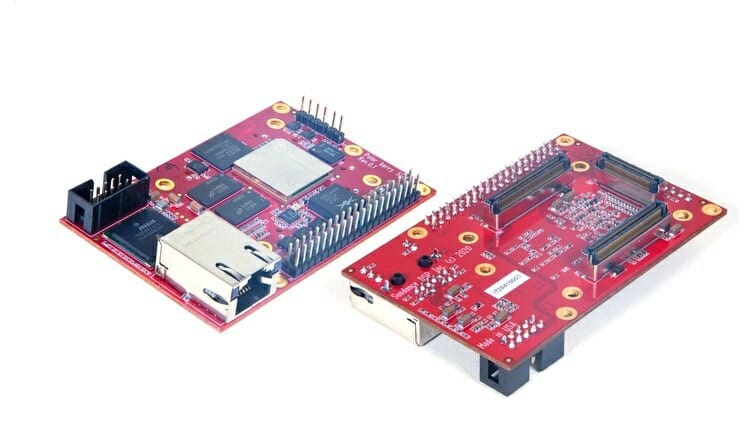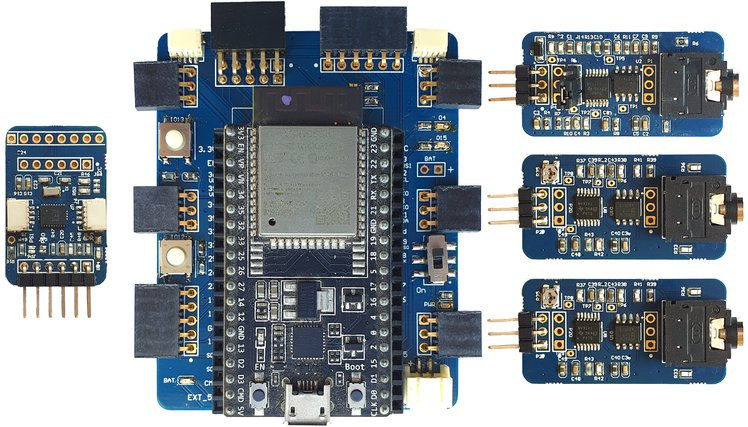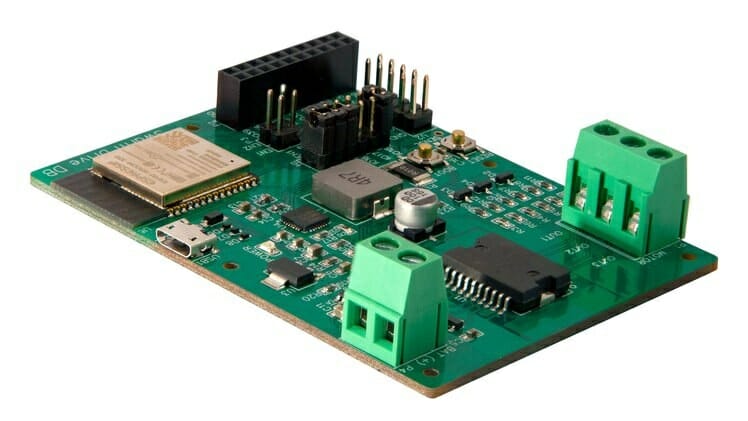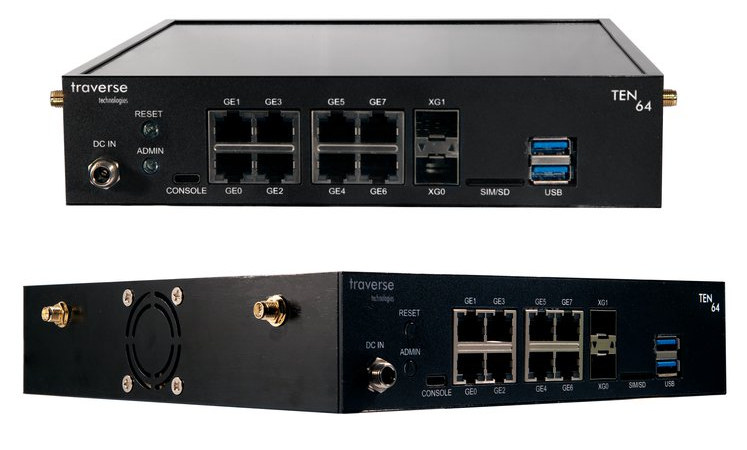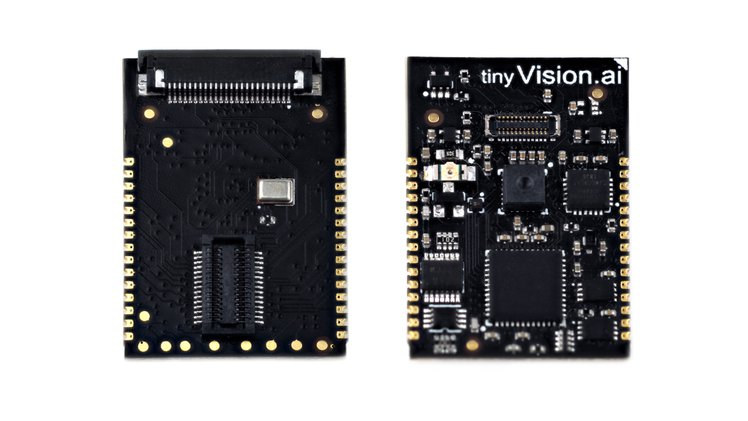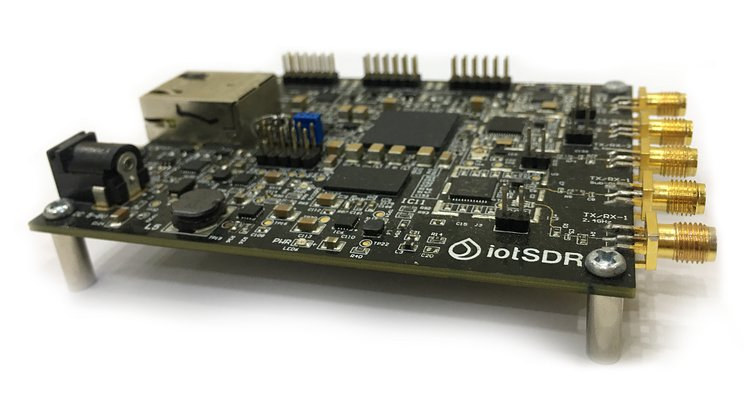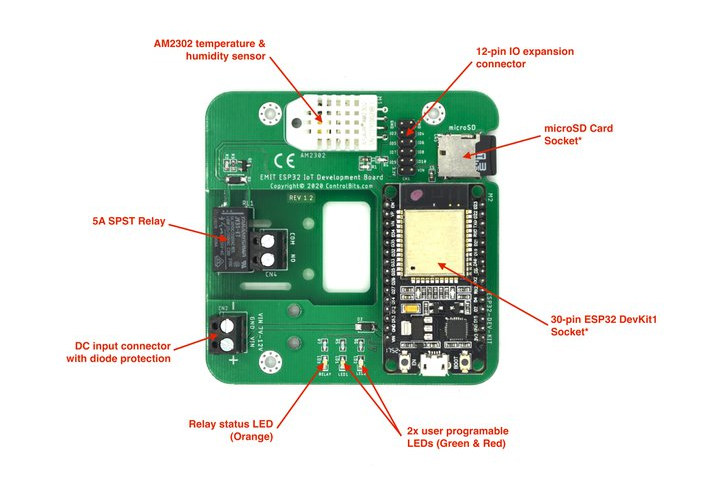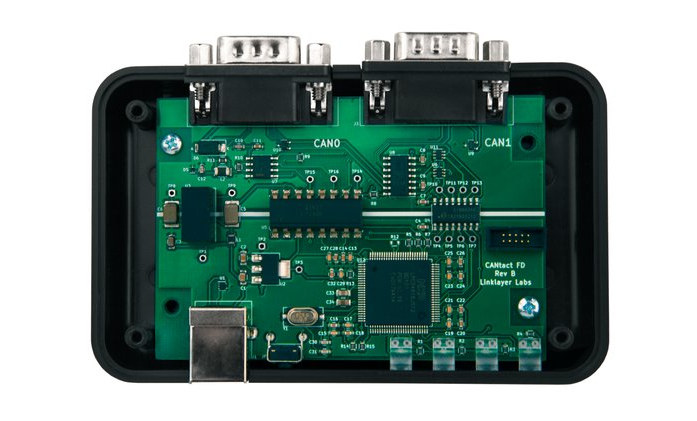SiFive may just have announced a mini-ITX motherboard for RISC-V PCs, but if you’d like a RISC-V Linux platform in a more compact form factor, Sundance PolarBerry may better fit your requirements, albeit the board will target different use cases. Powered by Microchip PolarFire RISC-V SoC FPGA, PolarBerry is both a single board computer with Gigabit Ethernet and 40-pin GPIO header, as well as a system-on-module thanks to three Samtec board-to-board connectors. PolarBerry specifications: SoC – Microsemi PolarFire FPGA MPFS250T-FCVG484 penta-core processor with 1x RV64IMAC monitor core, 4x RV64GC application cores, FPGA fabric with 254K x logic elements (4LUT + DFF), 784 x math blocks (18 x 18 MACC), and 16 x SERDES lanes at 12.5 Gbps; 12 W maximum power consumption System Memory – 4 GB of 32-bit wide DDR4 memory Storage – 4GB eMMC flash, 128 Mbit SPI Serial NOR flash for boot image Networking – Gigabit Ethernet […]
E3K all-in-one wireless bio-sensing platform supports EMG, ECG, and EEG sensors (Crowdfunding)
Over the year, The maker community has designed several platforms to monitor vital signs with boards like Healthy Pi v4 or HeartyPatch both of which are powered by an ESP32 WiFi & Bluetooth wireless SoC. WallySci has designed another all-in-one wireless bio-sensing platform, called E3K, that also happens to be powered by Espressif Systems ESP32 chip, and can be connected to an electromyography (EMG) sensor to capture muscle movements, an electrocardiography (ECG) sensor to measure heart activity, and/or an electroencephalography (EEG) sensor to capture brain activity. The board also has an extra connector to connect a 9-axis IMU to capture motion. E3K main board which the company refers to as “Data Communication and Processing Unit” (DCPU) comes with the following specifications: Supported wireless board – ESP32-DevKitC with ESP32-D0WD-V3 dual-core 32-bit LX6 microprocessor, up to 240 MHz, Integrated 520 KB SRAM, 16 MByte SPI flash. 2.4 GHz WiFI 4, and Bluetooth […]
SwarmDrive is an ESP32 motor driver board for brushless motors (Crowdfunding)
Netherlands based NickStick BV has developed a motor driver board powered by an ESP32 dual-core WiFI and Bluetooth module and capable of controlling brushless DC motors. The SwarmDrive board targets users who want to start experimenting with motor control, and learn about commutation strategies, PID for balance plateau or balance robots, cartesian gantries and spatial navigation, drive by wire and wireless, swarm intelligence experiments, etc. SwarmDrive specifications: Wireless module – Espressif Systems ESP32-WROOM-32D module with ESP32 dual-core processor @ 240 MHz, 4 Mbit flash Connectivity 2.4 GHz 802.11 b/g/n WiFi up to 150 Mbps Bluetooth v 4.2 BR/EDR and BLE Motor Control L6234 triple half-bridge motor driver, 5 A peak current 3-pin terminal block for motor output 3x enable pins are broken out to a bridging connector Programming and debugging – Micro USB serial port via USB to UART bridge, Misc – Boot and reset push-buttons Power Supply Supply Voltage – […]
Traverse Ten64 eight-core ARM64 10GbE networking platform runs mainline Linux (Crowdfunding)
Traverse Ten64 is a networking platform designed for 4G/5G gateways, local edge gateways for cloud architectures, IoT gateways, and network-attached-storage (NAS) devices for home and office use. Ten64 system runs Linux mainline on based NXP Layerscape LS1088A octa-core Cortex-A53 communication processor with ECC memory support, and offers eight Gigabit Ethernet ports, two 10GbE SFP+ cages, as well as mini PCIe and M.2 expansion sockets. Traverse Ten64 hardware specifications: SoC – NXP QorIQ LS1088 octa-core Cortex-A53 processor @ 1.6 GHz, 64-bit with virtualization, crypto, and IOMMU support System Memory – 4GB to 32GB DDR4 SO-DIMMs (including ECC) at 2100 MT/s Storage 8 MB onboard QSPI NOR flash 256 MB onboard NAND flash NVMe SSDs via M.2 Key M microSD socket multiplexed with SIM2 Networking 8x 1000Base-T Gigabit Ethernet ports (RJ45) 2x 10GbE SFP+ cages Optional wireless M.2/mPCIe card plus 3-choose-2 nanoSIM/microSD socket and up to 11x SMA connectors for antennas USB […]
Vision FPGA SoM Integrates Audio, Vision and Motion-Sensing with Lattice iCE40 FPGA (Crowdfunding)
tinyVision.ai’s Vision FPGA SoM is a tiny Lattice iCE40 powered FPGA module with integrated vision, audio, and motion-sensing capability with a CMOS image sensor, an I2S MEMS microphone and a 6-axis accelerometer & gyroscope. The module enables low power vision (10-20 mW) for battery-powered applications, can interface via SPI to a host processor as a storage device, comes with open-source toolchain and sample code, and is optimized for volume production. Vision FPGA SoM specifications: FPGA – Lattice iCE40UP5k FPGA with 5K LUT’s, 1 Mb RAM, 8 MAC units Memory – 64 Mbit QSPI SRAM for temporary data Storage – 4 Mbit QSPI Flash for FPGA bitstream/code storage Sensors Himax HM01B0 CMOS image sensor Knowles MEMS I2S microphone, expandable to a stereo configuration with an off-board I2S microphone InvenSense IMU 60289 6-axis Gyro/accelerometer I/Os 4x GPIOs with programmable IO voltage SPI host interface with programmable IO voltage Misc – Tri-color LED, […]
IoTSDR Linux Board Targets the Development of IoT Gateways with Standard or Custom IoT Protocols (Crowdfunding)
Xilinx Zynq-7010/-7020 powered iotSDR board by EmbedINN enables the development of IoT gateways with support for LoRa, SigFox, WeightLess, Bluetooth, BLE, 802.15.4, ZigBee, as well as custom IoT protocols. The board also supports GPS, Galileo, Beidou, and GLONASS navigation systems thanks to a Maxim Integrated MAX2769 GNSS chip. iotSDR key hardware features and specifications: SoC (one or the other) Xilinx Zynq-Z7010 (XC7Z010-1CLG400C) dual-core Arm Cortex-A9 processor with 256 kb on-chip memory, FPGA fabric with 28,000 logic cells, 17,600 LUTs, 2.1 Mb block RAM, 80 DSP slices Xilinx Zynq-Z7020 (XC7Z020-1CLG400C) dual-core ARM Cortex-A9 processor with 256 kb on-chip memory, FPGA fabric with 85,000 logic cells, 53,200 LUTs, 4.9 Mb block RAM, 220 DSP slices System Memory – 512 MB DDR3 Storage 128 Mbit QSPI flash memory for firmware Microchip AT24MAC602 SPI EEPROM for RF transceiver MCU firmware and data Radios “IoT” Radios RF Transceivers – 2x Microchip/Atmel AT86RF215 European band – […]
EMIT ESP32 IoT Development Board Comes with Temperature & Humidity Sensor, 5A SPST Relay (Crowdfunding)
ControlBits EMIT (Environmental Monitoring for the Internet of Things) is a baseboard compatible with DOIT ESP32 DevKit V1 development board and equipped with a temperature and humidity sensor, a relay, a 12-pinGPIO connector, and a MicroSD card. EMIT ESP32 IoT development board specifications: Socket for DOIT ESP32 DevKit v1 board with WiFi and Bluetooth LE connectivity Storage – MicroSD card socket Sensor – AM2302 temperature & humidity sensor with -40° to +80° C and 0 to 99.9 %RH ranges. Relay – 5A SPST relay output with status LED Expansion – 12-pin GPIO header Misc – 2x programmable status LEDs (red & green) Power Supply – 5V via USB on ESP32 board, or external 7-12 V supply via terminal block Dimensions – 81 x 81 mm (PCB only) The board comes with mounting holes so it can be wall-mounted, and an optional enclosure is also available. Some applications for the board […]
CANTact Pro Open-source USB to CAN Device Enables Car Hacking (Crowdfunding)
The Controller Area Network (CAN) serial communication bus allows microcontrollers and devices to communicate with each other without a host computer. It’s especially used in automotive applications where various components (dashboard, ABS, air conditioner, and other sensors) may need to communicate with each other, but it has also found its way into robots, industrial control systems, and avionics. CANTact Pro is an open-source USB to CAN device that can help you debugging or hack components inside a car or other vehicle. The tool features two CAN Interfaces and can be controlled from Windows, Linux, or Mac OS computers. CANTact Pro key features and specifications: CAN Interfaces – 1x CAN/CAN-FD/SWCAN (Single Wire CAN), 1x CAN/CAN-FD; Both via DB9 connectors Host Interface – USB 2.0 device port Misc – 4x LEDs Safety – Isolation between CAN and USB Power Supply – 5V via USB port CANTact Pro works with Windows, macOS, and […]


